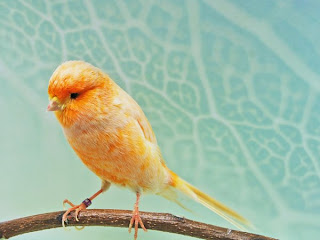The Yorkshire Canary is essentially a "manufactured" breed, created mainly during last quarter of the nineteenth century from various crosses involving common canaries, the Lancashire Plainhead, the Norwich (old-fashioned type), and the Belgian.
Description
The "gentleman of the fancy" as it was so often called by earlier writers, is a bird of style and elegance. The desired attitude when the birds is in full pose in its show cage is almost erect, with a confident and dignified carriage of the body. The legs are long and straight, yet supple and without any suggestion of stiltiness, and should not show too much of the thigh joint.
The feathering is short and close and carried tightly to the body without any suspicion of eyebrow, nor of any roughness or looseness at the thighs or breast, the texture being soft and fine as silk.
The wings are long and are carried close to the body, meeting evenly down the center of the back, and the tail also is long and tightly folded, never being wide and spreading, since a loosely folded tail is a blemish which will inevitably spoil the whole balance of an otherwise good Yorkshire.
The head is being described as "full", with the back of the skull coming well down towards the rising curve of the shoulders so that there is no appreciable appearance of the neck.
The high shoulders are fairly broad and well-rounded, but the main line of the back as viewed from the side is straight and continues so to the root of the tail.
The Yorkshire is one of the larger breeds of canary, the average length being about 6¾ inches.

